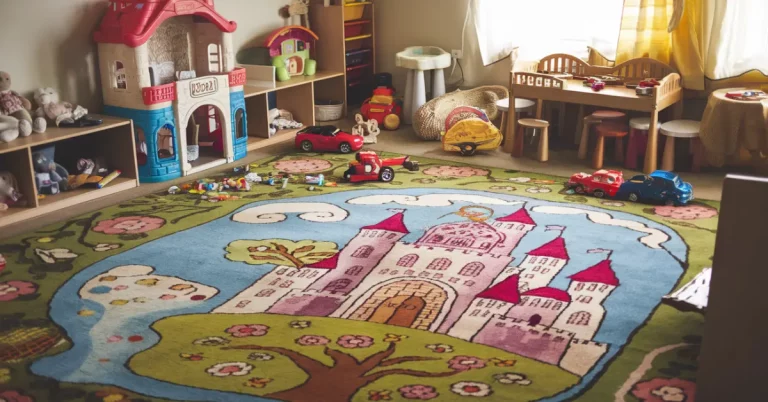DIY Escape Room for Kids: A Fun and Engaging Family Activity
Crafting an engaging birthday experience for your child can feel as challenging as a tightrope walk in a gusty wind. Yet for the child who thrives on solving puzzles and diving into adventures, a homemade escape room could be an absolute hit!
Picture this: your child and their buddies, their faces lit with excitement, piecing together clues and cracking codes right in your living room.
What is an Escape Room?
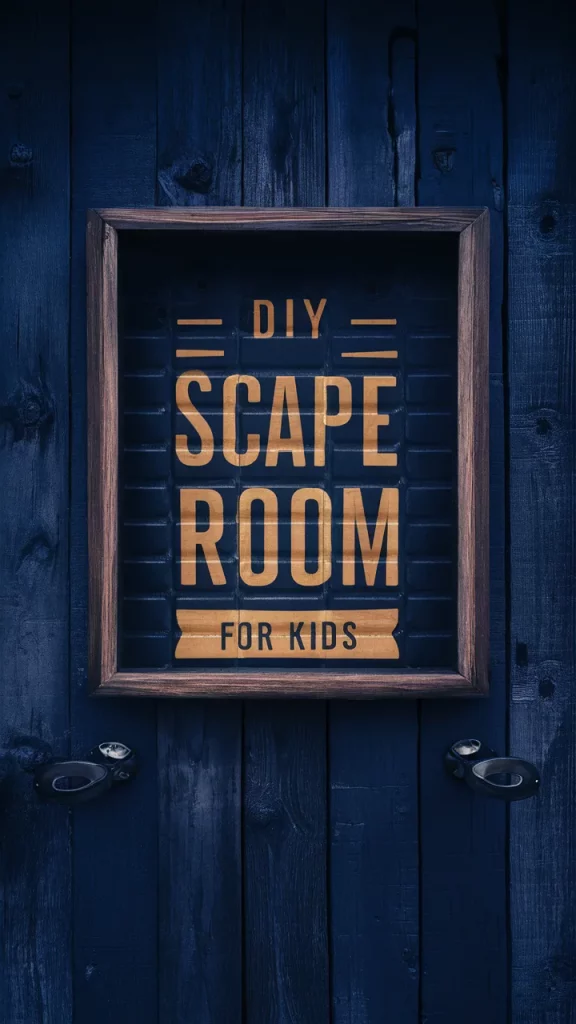
Picture a game so captivating that it pulls you into its world, demanding wit, strategy, and teamwork to unearth clues and conquer challenges. That’s an escape room for you—and, yes, with a dash of creativity, you can set one up in your own space!
Escape games are a whirlwind of brain-teasers and mysteries where the clock is your relentless rival. And the cherry on top? You get to watch the sheer delight of children as they unravel your homemade puzzle labyrinth.
Let’s dive in and get this party puzzle started!
Why Make Your Own Escape Room?
Why Make Your Own Escape Room, You Ask?
The Learning Game
Escape rooms? Yeah, they’re fun but did you know they’re also a sneaky brain builder? Imagine your kids diving head-first into puzzles, their brains ticking away faster than a time bomb in a spy movie. They’re not just having fun—they’re building problem-solving skills, logic, and teamwork. And there’s nothing like a tough puzzle to teach them some grit and determination.
Budget Friendly
Let’s face it, taking the whole gang to a professional escape room can break the bank. Why not make your own at home? It’s like cooking a gourmet meal on a ramen noodle budget—totally doable and super satisfying. Tailor it to your child’s interests and you’re all set for an adventure without breaking the bank.
The Bonding Agent
Nothing, I mean nothing, bonds a family together like a homemade mystery. It’s like you’re all characters in your favorite TV show, minus the commercials. Solving clues together isn’t just fun; it’s creating lasting memories. And let’s be real, turning your living room into a mystery maze is just plain cool.
Go for it! Make your own escape room today. It’s a ticket to learning, saving, and bonding like you never thought possible. And you get to be the puppet master, and who doesn’t love that?
How to Make Your Own Escape Room for Kids?
Turning an ordinary Saturday into an extraordinary adventure is as simple as creating your own escape room for kids. It’s like being a wizard for a day, creating a magical experience in your living room or any corner of your house that’s crying out for some excitement.
Start: Claim Your Space
Search your castle (or house) for the perfect space – a living room that’s seen more lazy afternoons than it cares to remember, a basement that’s crying out for company, or a bedroom that’s big enough to hide secrets. These spaces are your blank canvas, waiting for a dash of mystery and fun.
Theme: The Heart of Your Adventure
Choosing a theme is like picking the destination for your family’s next holiday – fun and full of options. Enter a world where Mystical Wizards and Witches rule, go on a Pirate Treasure Hunt, explore Outer Space Adventures or get Lost in the Jungle. The theme is the foundation for every puzzle and decoration to follow.
Weaving the Spell
Now, for the magic dust – the story. Imagine your living room is not just a living room but a forbidden forest or a secret wizard’s lair. For example, if you’re going full-on wizard mode, maybe the story is that your kids are young apprentices (a.k.a. your kids) brewing a potion to stop an evil sorcerer’s plans.
The Puzzles: Brain Teasers
Tuning the Difficulty Dial
Remember to match the puzzle difficulty to the participants’ ages. Kids have brilliant minds but they also have shorter attention spans. Aim for that sweet spot – challenging enough to keep them engaged but not so hard they get frustrated.
Variety is the Spice of Life – And Puzzles
- Riddles: Nothing like a good brain-twister to get the excitement going.w kids to gauge the difficulty level and the time required. This will help you make the necessary adjustments.
- Ciphers and Codes: A little secret language never hurt anyone.
- Hidden Objects: Who doesn’t love a treasure hunt?
- Puzzle Boxes: A box that doesn’t open the usual way? We’re in!
The Magician’s Toolkit: Essential Props
- Cryptex Cipher: Think of it as a secret-keeper. Kids will feel like real code-breakers spinning it around to reveal hidden messages.
- Invisible Ink and Black Light: Because who doesn’t love a little magic in revealing hidden clues?
- Locks and Keys: Add a physical element of mystery and a little “aha!” every time a key turns the lock.
Setting the Scene: Game Flow
Every great story has a beginning. Set the stage with a grand entrance or an intro. Imagine a scroll left by a wizard, inviting the kids to start their adventure.
Clues should flow like a river – one into the next, keeping the momentum going without bogging down.
And like all good things, even this adventure has a time limit. Aim for 30-45 minutes, before attention spans run off into the sunset.
Extra Magic: Engagement Tips
Dress Code? Yes, Please! Encouraging costume play can add that extra sparkle. Who wouldn’t want to wear a wizard’s robe or a pirate’s hat for the day?
Sound Effects: Background music isn’t just for movies. The right sounds can turn a regular room into an ancient temple or a space station!
Friendly Guide: A little adult guidance masquerading as part of the story can nudge the young adventurers away from the puzzling dead ends.
The Safety Spell
Ensuring safety is like casting a protection spell over the entire adventure. Child-proof the area, keep puzzles age-appropriate, and double-check for pesky, small parts that could turn into hazards.
The Trial Run: Practice Makes Perfect
Before the grand unveiling, invite a mini audience for a test drive. It’s your chance to see if the puzzles elicit smiles or frowns and adjust accordingly.
Creating a DIY escape room for kids is not just about keeping them occupied. It’s about memories, laughter, and a little bit of magic. So roll up your sleeves, let the creativity flow, and prepare for an epic adventure right at home. Who knew your living room had the potential to be the setting of the Greatest Adventure yet?
Themes to Spark Imagination
Choosing a theme is where you begin to build your escape room. Let’s get started with some themes that will be a winner:
1. Dinosaur Park Adventure

Who doesn’t love dinosaurs? Imagine this: toy dinosaurs hiding around corners, jungle leaves hanging from the ceiling, and dino eggs scattered throughout the room. It’s like going back in time a few million years—except you won’t become a T-Rex’s lunch!
This is exciting and a peek into prehistoric times without the need for a time machine. Just remember, while dinosaurs are cool in the excitement department, don’t let the room turn into a Jurassic jungle of chaos.
Keep it fun and safe and steer clear of turning your living space into a full-on Mesozoic era—your neighbors may not appreciate a T-Rex roar contest at dawn.
2. Chocolate Factory Mysteries
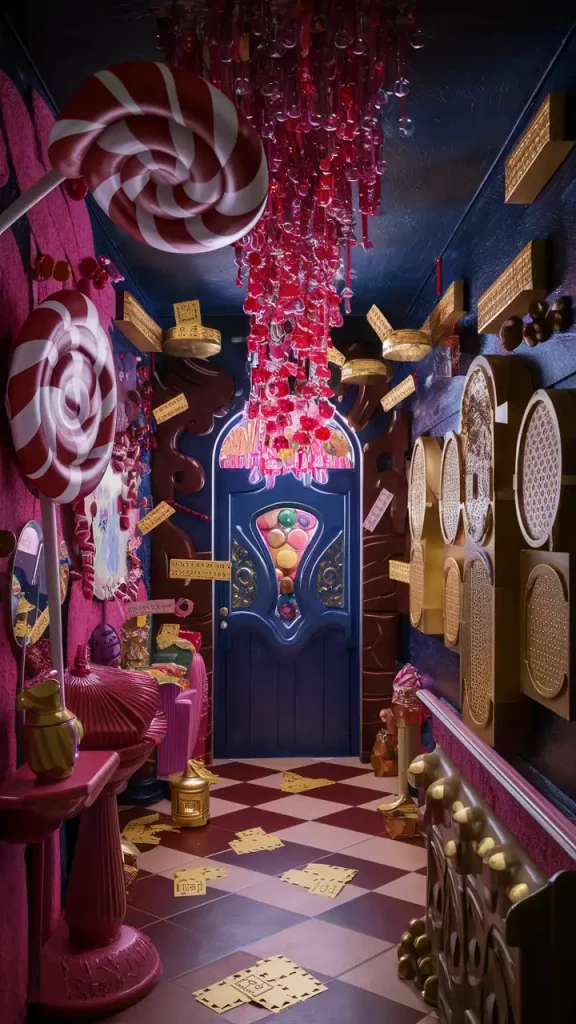
Imagine stepping into a world of lollipops and giant candy canes. Channel your inner Willy Wonka and go wild with color! Scatter some candy props around and don’t forget the golden tickets. This isn’t just for the eyes, it’s the entrance to a sugar-filled puzzle adventure.
Want to see those little faces light up? Let’s keep the creative train rolling and turn these sweet ideas into an escape game.
3. Pirate Treasure Hunt
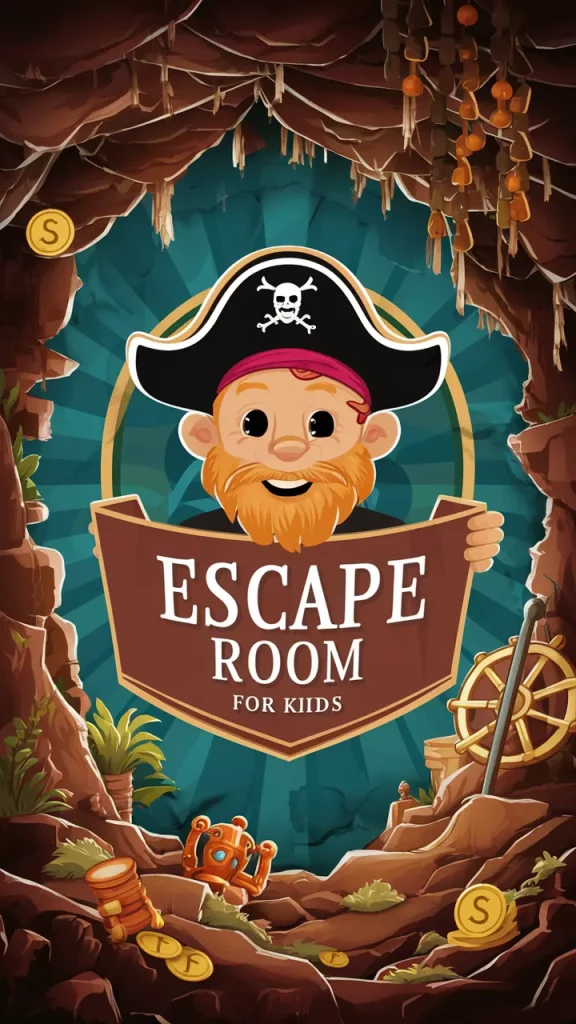
Set sail on a treasure hunt where X marks the spot. Put on your pirate hats and unfold your own treasure maps. Turn your home into the high seas and search for glittering gold doubloons. No soggy boots are required!
4. Haunted House
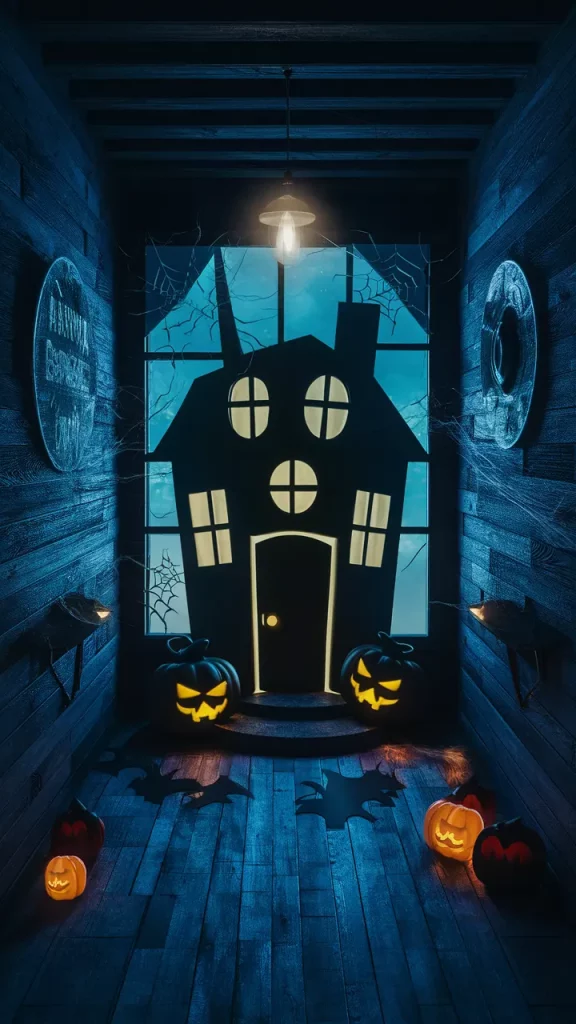
Who says you need Halloween to have a good scare? Dress up a room with glow-in-the-dark spooky stuff and stretch those cobwebs from corner to corner.
Let the whispers and creaks send a thrill down each little spine. It’s all beautiful fun that’ll have your kiddos giggling between gasps.
5. Space Adventure

Why look at the stars when you can touch them from your living room? Turn the play area into a space playground with twinkling stars and spinning planets.
Make a spaceship out of cardboard and foil and watch as your little astronauts bounce around, weightless from Earth’s gravity. It’s not rocket science, it’s just plain blast-off fun!
Sprinkle in your magic as you create these worlds. Remember, a straight line is not always the most exciting path—zigzag through creativity, like a game of Snake and Ladders, your fun grows with each roll of the dice. Keep those sentences fun-sized, like a playground slide—short and sweet, with an occasional twisty-turny one for the thrill-seekers.
Go! Creator of Fun! Your task: create an escape room that will thrill your mini-explorers. No filler here, just the beef of fun and giggles.
Tips for Successfully Running Your Escape Room
Tailoring Challenges for Different Ages
Crafting a kid-friendly escape room? Remember, one size doesn’t fit all! For the tiny tots, think simple – basic puzzles and a nudge or two in the right direction. Got tweens or teens? Amp up the brain busters and watch them rise to the occasion!
Props: The Magic Touch
Who says you need high tech to have high fun? Grab a magnifying glass, a box with a stubborn lock, or tuck away secret notes in nooks and crannies. It’s like magic, only it’s real, and it’s in your living room!
Teaming Up with Tech
Now, don’t shy away from a dash of digital dazzle! A well-timed sound clip or a mysterious video clue can elevate the game. Hand over a tablet and declare it the ultimate spy gadget – Mission Accomplished!
Print and Play: Your Secret Weapon
Why reinvent the wheel when the internet is chock-full of puzzle gold? Print some ready-made riddles from resourceful websites. Customize them if you’re feeling snazzy; otherwise, just snip, hide, and watch the little detectives get down to business!
By embracing these tips, you’re not just setting up an escape room, you’re crafting an adventure in your own abode. Keep it snappy, make it snazzy, and above all, remember: the true treasure is hearing “Best. Day. EVER!” echoed through the halls.
Exciting Puzzles for Your DIY Escape Room
Craft a Word Search with a Twist
Construct a clever word search puzzle that aligns with your chosen motif. The real fun starts after finding all the words, as the unused letters come together to reveal a secret message – a delightful surprise that the young detectives will love to decipher.
Math Puzzles: A Cipher in Numbers
Math can be a fantastic adventure. Transform basic math into a code-breaking game by letting the sums reveal letters. Here’s the trick: the total of the sum might stand for a letter based on its position in the alphabet. For example, if 2+3 equals 5, then crack the code by mapping the number 5 to its alphabetical companion – ‘E.’
Creating Memories that Stick
There’s something magical about escape rooms—a concoction of laughter, shared effort, and victories that ring victorious. More than just a brainteaser, it’s the uproarious moments and the feeling of “we did it!” that will imprint on your family’s memories.
Remember, when devising this adventure:
- Engage their curiosity with puzzles that make them think outside the box.
- Celebrate the small wins as each solved riddle brings a shared cheer.
- Capture the moments: Occasionally, let the clock stop just to relish in the fun.
By following these simple yet effective tips, you’ll not only captivate your kids’ attention but also shape an at-home escape room experience brimming with joy and family bonding that will be the talk of dinner times for weeks.
Conclusion
Creating a DIY escape room for kids is not only a fantastic way to celebrate a birthday but also an opportunity to foster creativity, teamwork, and problem-solving skills.
With careful planning and a touch of imagination, you can craft an unforgettable experience that will leave your child and their friends talking about it for years to come.
FAQs
What are some easy puzzles for a DIY escape room for kids?
Some easy puzzles include matching shapes, simple ciphers like Caesar shifts, finding hidden objects, and solving jigsaw puzzles. These activities are engaging without being too challenging for young minds.
How long should a DIY escape room for kids last?
A DIY escape room for kids should ideally last between 30 to 45 minutes. This duration keeps them engaged without causing frustration or restlessness.
How can I ensure the puzzles are age-appropriate?
Test puzzles beforehand with kids of the same age group to gauge difficulty. Simplify any overly complex puzzles and ensure that all tasks are safe and suitable for the children participating.
Can I mix different themes in one escape room?
Absolutely! Mixing themes can add a unique twist. However, ensure the transitions are smooth and the storyline remains coherent to avoid confusion among the participants.

